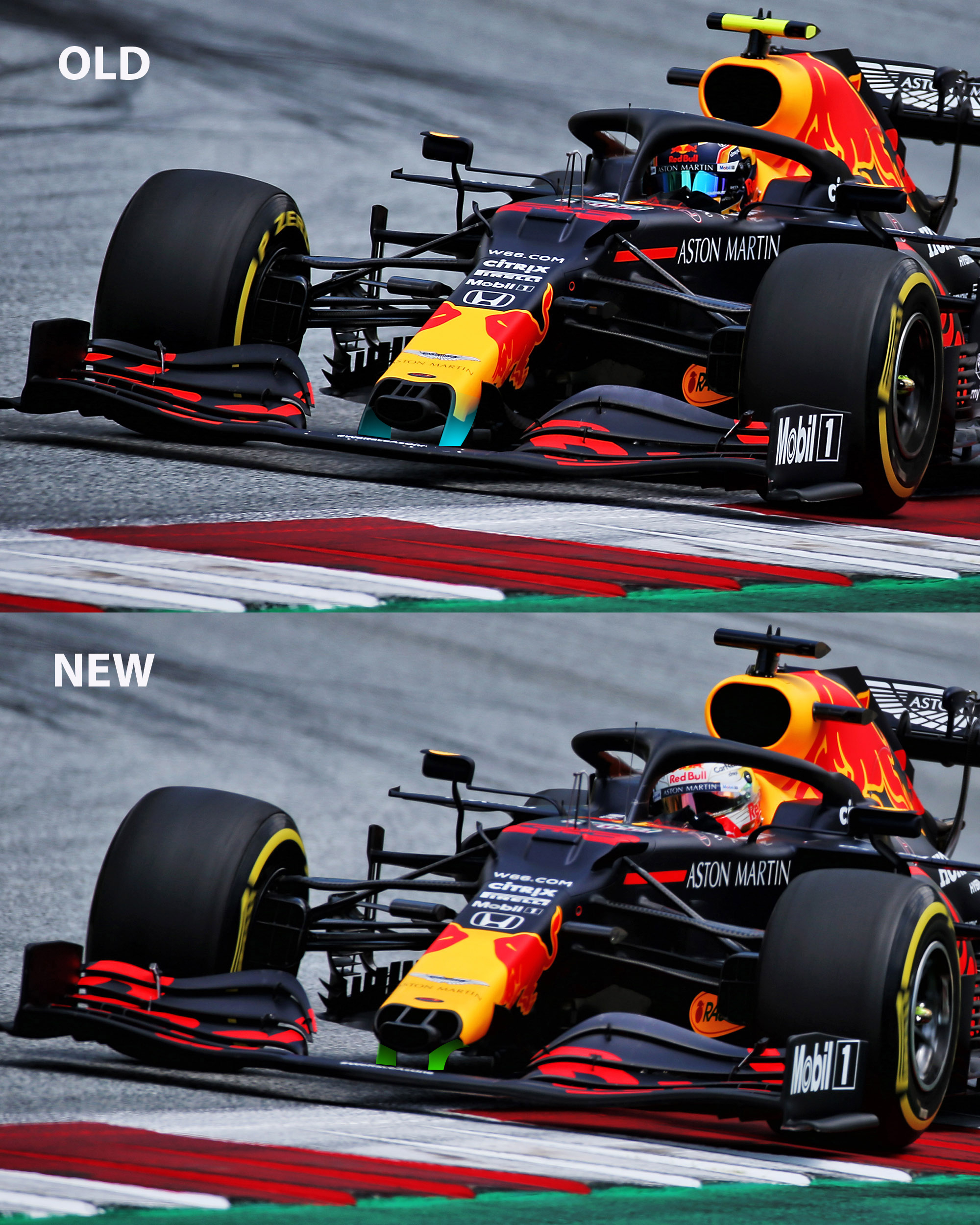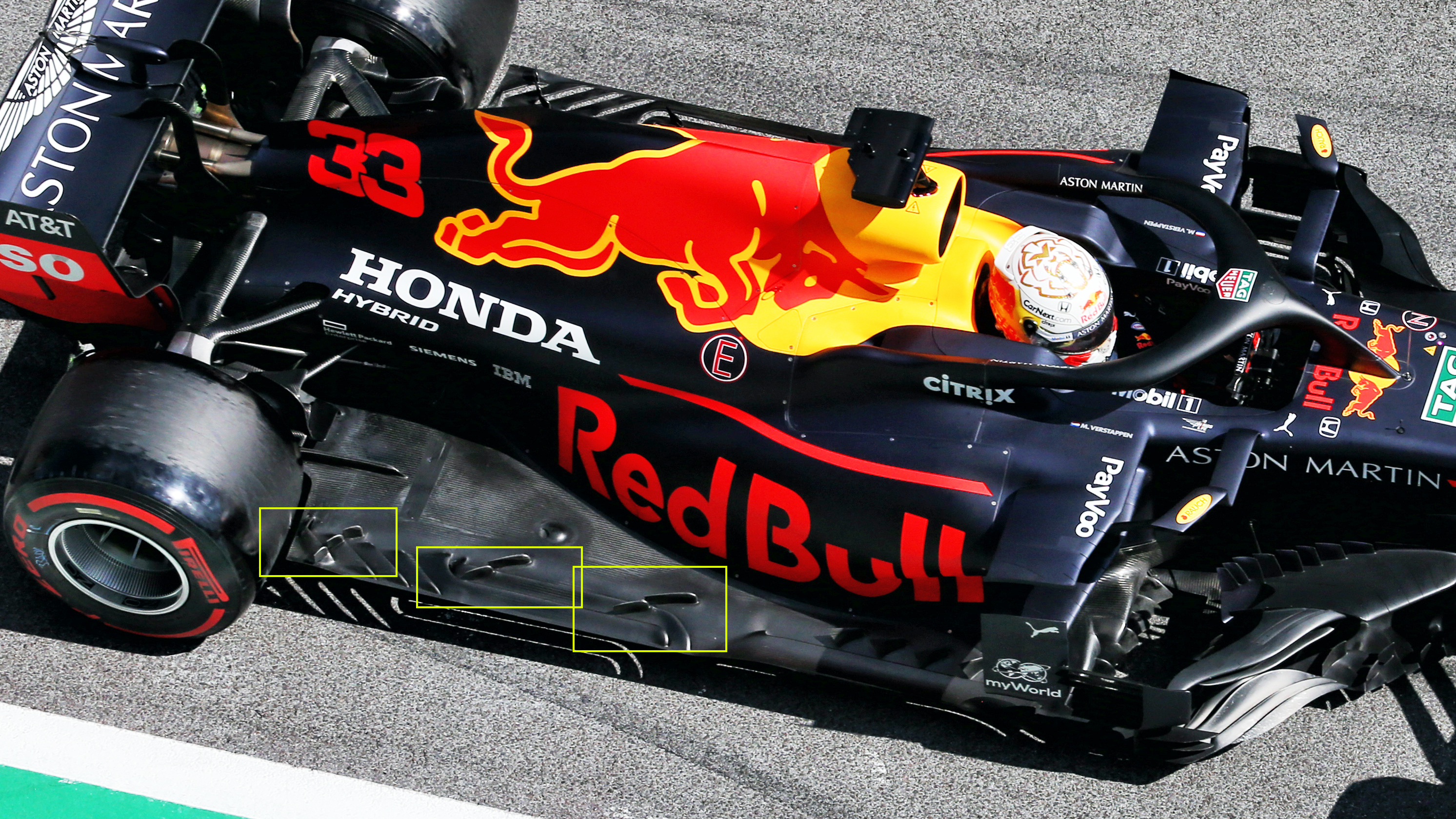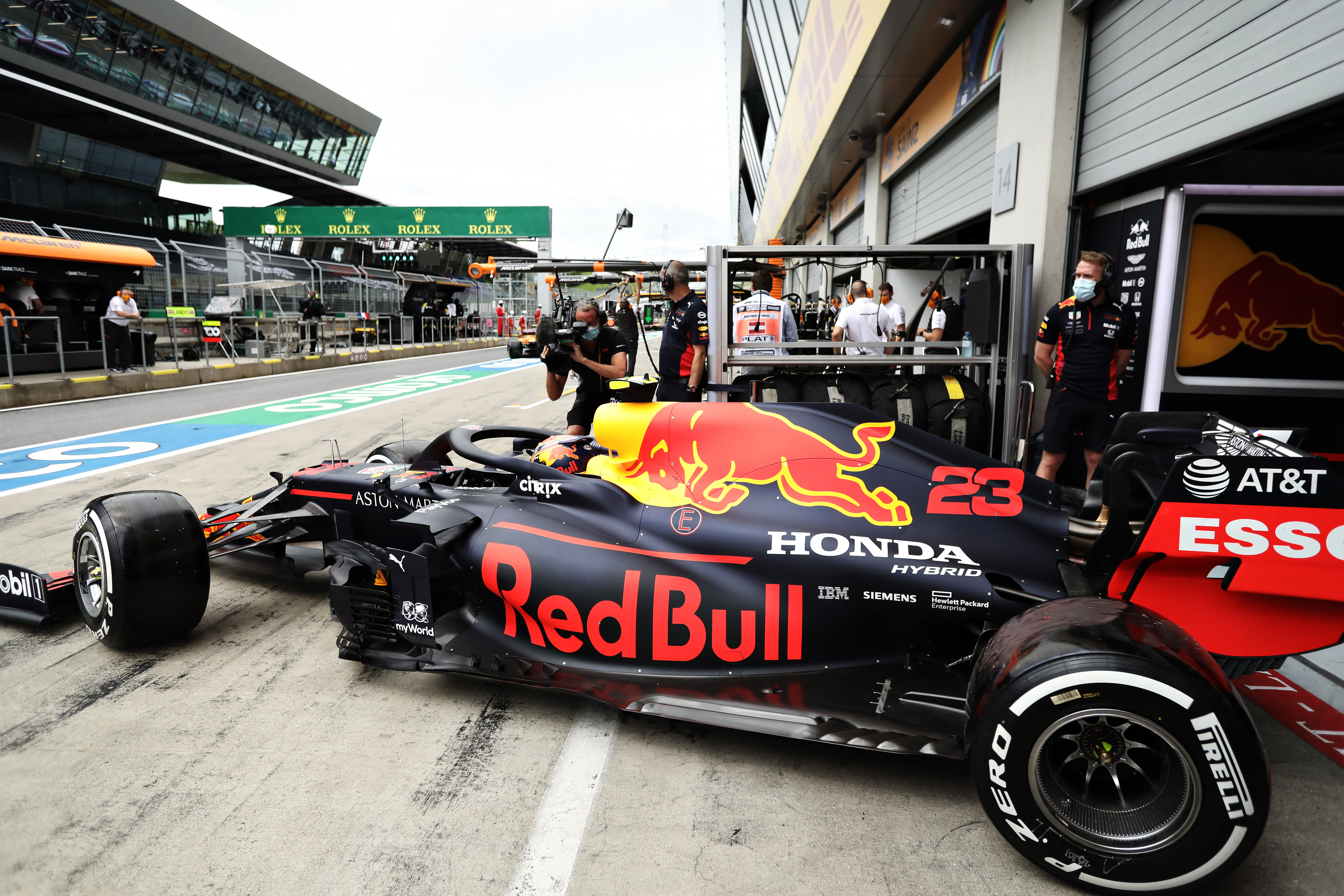Up Next

Max Verstappen is running with an upgraded nose on his Red Bull Formula 1 car at the Austrian Grand Prix, with a big visual difference between the old and new specifications.
This is part of an upgrade package that also includes the new floor that was first trialled on Red Bull’s promotional day of running at Silverstone last month, although the nose could not run there as the only one that had been manufactured by that point was the one used for the mandatory crash test.
The front of the Red Bull always looks dramatic, and this new nose configuration is no different.
The main change is the narrowing of the front wing mounting pillars, which is something that Mercedes has been running for quite some time. The picture below shows the new front wing below the older version.

The main change is the narrowing of the front wing mounting pillars, which is something that Mercedes has been running for quite some time. The picture below shows the new front wing above the older version.
On the old version, the pillars were wider and the trailing edge curved outwards to pull more airflow through between the wing pillars.
On the new version, the pillars are more or less straight so do not affect the direction of the airflow so much.
This will allow more of the airflow that is spilling over the top of the nose and passing along its sides to be picked up by the very high leading edge of the cape section that is mounted under the nose.
By doing this, you are introducing more mass flow to the bargeboards and in turn the leading edge of the floor.
Pulling more airflow through the centre section of the front wing can also help when you are following another car as the cape section basically sorts out the airflow to the underfloor. However, the downforce loss on the front wing will still mean the car will understeer.
The only negative from this development will be on the stability of the front wing. By having the wing mounts that bit narrower, the wing mounting in itself will need to be beefed up, otherwise the outer ends of the wing could very easily start moving around too much.

The main additions to the Red Bull’s new floor are the turning vanes on the floor’s upper surface, highlighting above.
These help to turn the airflow and redirect it into the floor’s slot arrangement.
All of this is in attempt to connect this airflow to the airflow being displaced by the rear tyre as it rotates onto the track surface.
When this happens, the air gets forced out around the tyre, which increases its speed.
By connecting the airflow that is on top of the floor, it works a bit like a vacuum cleaner – which in turn seals the sides of the floor from airflow being sucked under the car.
Achieving this means the underfloor and diffuser, especially on a high-rake car, works just that little bit better.

Only Verstappen had the parts because there was only one set available, but team-mate Albon, who was 0.391s slower in qualifying and whose car is pictured above, is expected to have the package for next weekend’s Styrian Grand Prix.
“There was only one set so they gave it to me,” said Verstappen.
“We are still understanding the difference between the wings but it’s different philosophies behind it.
“I can’t really tell you how much of a difference it is because I don’t know.
“We’re learning, we’re understanding different things.”



